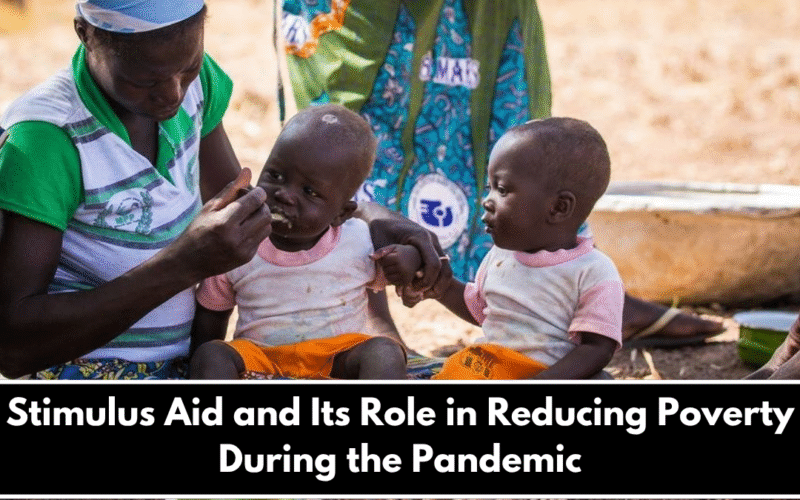The COVID‑19 pandemic caused a global economic crisis that left millions jobless, vulnerable, and in need of help. To address this, many governments rolled out stimulus aid—such as direct cash transfers, unemployment benefits, food distribution, and tax credits—to protect their citizens. In countries like the United States and India, these measures helped reduce poverty, support families, and stabilize economies during one of the most challenging periods in recent history. This article explores how stimulus aid played a key role in reducing poverty during the pandemic and what lessons can be learned for the future.
1. Key Pillars of Stimulus Aid During the Pandemic
One of the main ways governments helped people was through direct cash payments. In the United States, three rounds of stimulus checks were distributed to individuals and families. These checks helped cover basic needs like rent, groceries, and utilities, especially for those who had lost their jobs. Studies estimated that these payments lifted millions out of poverty in 2020. Another major support came through expanded social programs. In the U.S., unemployment insurance was boosted, food assistance programs were widened, and the Child Tax Credit was made fully refundable. These policies contributed to a record drop in child poverty, helping millions of low-income families stay afloat.
Globally, several countries adopted similar measures. In low- and middle-income nations, cash transfers and emergency subsidies helped reduce the expected spike in poverty. Countries like India introduced food distribution programs, such as free grain for over 800 million people, which helped keep extreme poverty levels in check.
2. How Stimulus Aid Translated Into Poverty Reduction
Short-term relief and financial stability
When people lost income due to lockdowns and business closures, stimulus aid provided a crucial lifeline. For low-income households, these payments acted as temporary income replacements. This reduced the need for loans, avoided debt traps, and gave people time to recover.
Spending power and economic ripple effects
Most people who received stimulus aid spent it quickly on essentials. This spending helped revive local businesses and created a positive ripple effect across the economy. In many cases, this boosted economic activity even in areas hit hardest by the pandemic.
Preventing deeper poverty
Economic studies have shown that without this aid, poverty rates would have been much worse. The aid worked as a cushion, preventing many families from falling below the poverty line during a time of severe hardship.
Long-term impact and child welfare
Some countries already had social transfer programs in place before the pandemic. These helped children in poor families access education, nutrition, and healthcare. During the pandemic, these programs helped ensure long-term benefits by reducing dropout rates and improving resilience among young people.
Stimulus aid proved to be a powerful tool in the fight against poverty during the COVID-19 pandemic. Direct payments, food programs, and expanded benefits helped millions maintain financial stability and avoid extreme hardship. In the United States, child poverty reached historic lows in 2021, while countries like India managed to keep extreme poverty from rising significantly. However, when some of these support programs ended, poverty levels quickly increased again. This shows that while short-term stimulus is effective, long-term social safety nets are equally important. Governments should take lessons from the pandemic and consider building permanent support systems that can be quickly activated in times of crisis. This would not only protect people in emergencies but also strengthen communities for the future.
FAQ’s:
1. How did stimulus aid help during the pandemic?
Stimulus aid provided cash, food, and expanded benefits to people affected by the pandemic, helping them meet basic needs and avoid falling into poverty.
2. What types of aid were most effective?
Direct cash payments, enhanced unemployment insurance, food distribution, and child tax credits were among the most effective tools in reducing poverty.
3. Did stimulus aid reduce child poverty?
Yes. In countries like the U.S., child poverty fell to record lows due to programs like the expanded Child Tax Credit and food assistance.
4. What happened after stimulus programs ended?
In many places, poverty levels rose again after the expiration of these programs, highlighting the importance of long-term support systems.
5. What lessons can we learn for the future?
The pandemic showed that quick and targeted financial aid can reduce poverty significantly. Governments should build stronger social safety nets for future crises.
